Highlights

Sigiriya: An Early Designed Landscape in Sri Lanka
Inscribed today on UNESCO’s World Heritage List, Sigiriya, an archaeological site in central Sri Lanka, may be one of the old-est gardens known in Asia. The late antique (4th–7th century) remains of buildings, zoomorphic architecture and rock paint-ings upon its central outcrop have elicited interpretation since the late 19th century (Figs 1 and 2). Sigiriya was thought to be a palace complex, and the art historian Ananda Coomaraswamy likened its paintings to the Gupta period (c. 320–550 CE) cave paintings at Ajanta in India (Coomaraswamy, 1971, p. 163).
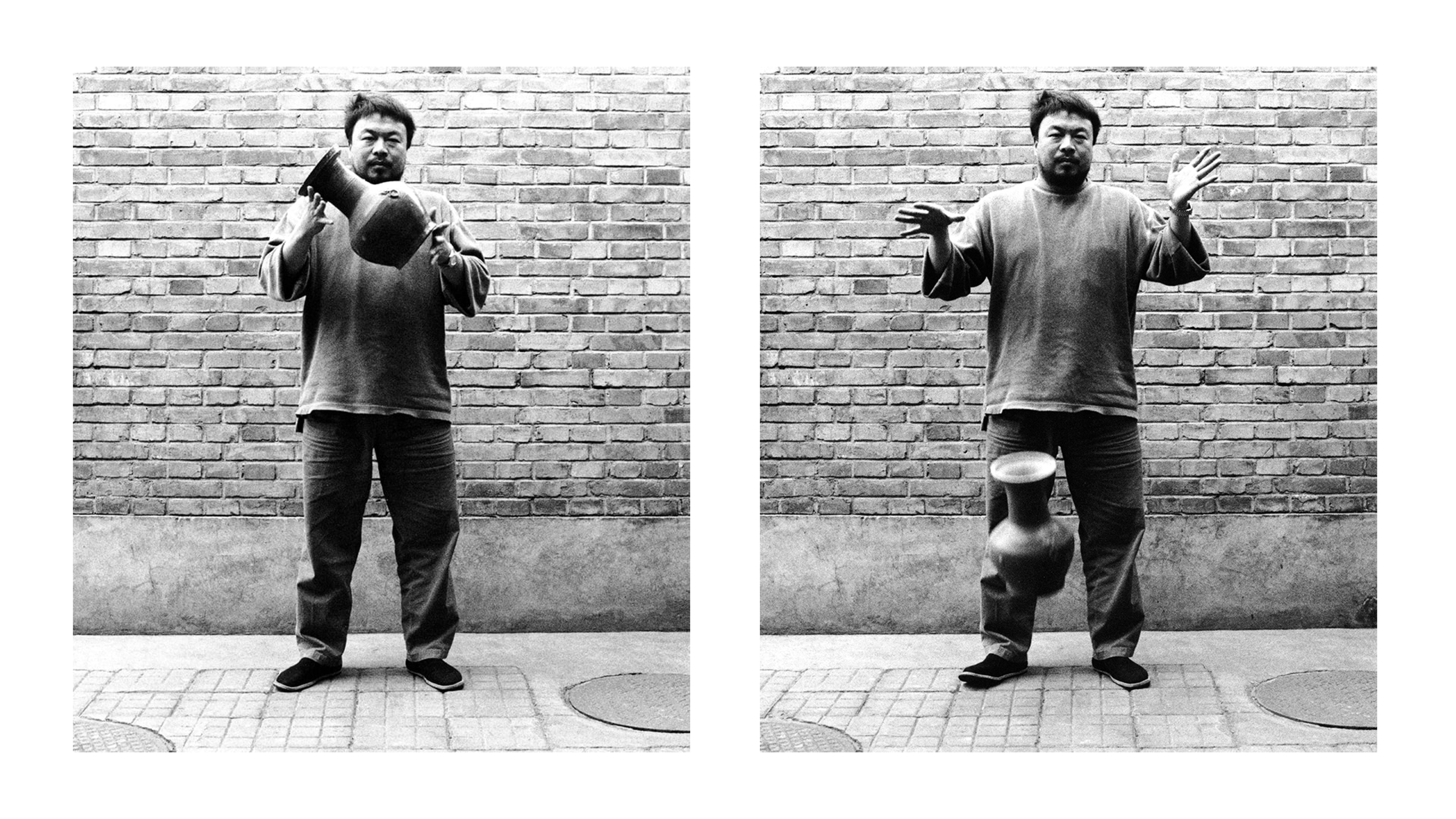
A Battlefield of Judgements: Ai Weiwei as Collector
One wonders, however, whether this artist is not best known for the wrong reasons. Ai Weiwei, son of the celebrated modern poet Ai Qing (1910–96), has a side that is often overlooked. This larger-than-life figure is one of the most passionate collectors and connoisseurs of Chinese antiquities, particularly jade, that I have met. In fact, he financed much of his early work as a contemporary artist through the sale of antiques.

The Vohemar Necropolis, Madagascar, and the Regional Distribution of Chinese Ceramics in the Swahili World (13th–17th century)
Archaeological artefacts unearthed from the Vohemar necropolis, mainly consisting of funerary objects, are currently kept both in France (the Quai Branly–Jacques Chirac Museum in Paris and the Museum of Natural History in Nîmes) and in Madagascar (the Museum of Art and Archaeology at the University of Antananarivo). They constitute an exceptional array of perfectly preserved objects: weapons (swords), iron tools (needles, daggers, knives, and scissors), everyday utensils (ceramic jars, ceramic bowls, glass bottles, and spoons of mother-of-pearl), and ornaments (bronze mirrors; agate and glass-bead necklaces; silver and glass-bead bracelets; and gold, silver, bronze, and agate rings). It is important to highlight the staggering number of well-identified imported items among these funerary objects. Along with Chinese ceramics, which are the most numerous, there is Islamic glassware, Indo-Pacific glass beads, bronze mirrors (probably of Islamic origin), and Indian and southeastern Asian gold or silver jewellery.
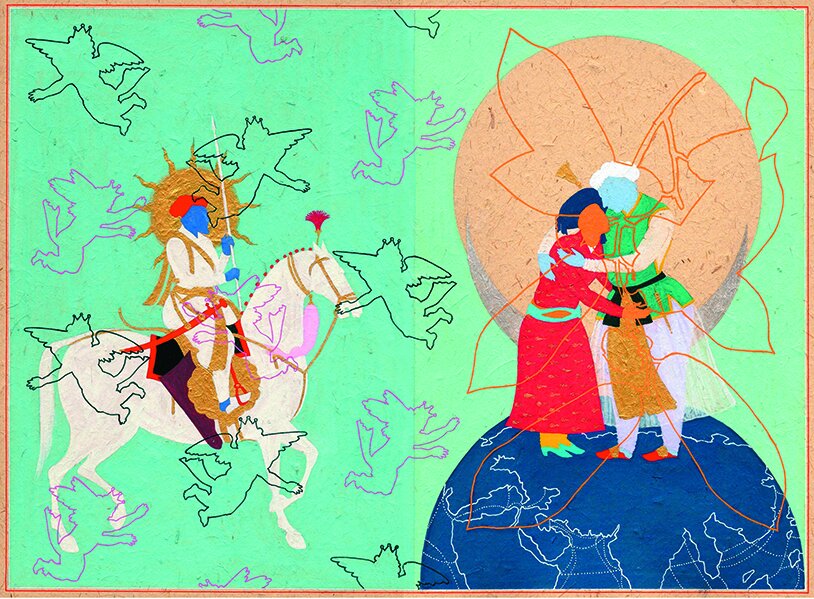
Loaded Histories: The Global Constructions of Nusra Latif Qureshi
One of the most striking qualities about the work of contemporary artist Nusra Latif Qureshi is how she illustrates the absent. Her work embraces the traditional, while maintaining a shrewd eye towards historical content and the conceptual. Born in 1973, Qureshi earned her BFA at the National College of Arts (NCA) in Lahore, as part of a contemporary miniature painting programme . Like her classmates, she began her training by copying illustrated manuscript paintings from the Mughal, Rajput and Persian schools. The focus on technical precision, repetitive exercise and careful observation that this required acted as a stepping-stone towards contemporary global art practice.

‘Saints and Kings: Arts, Culture and Legacy of the Sikhs’
The Asian Art Museum of San Francisco celebrates the heritage of the Sikhs with the exhibition ‘Saints and Kings: Arts, Culture and Legacy of the Sikhs’ (10 March–18 June 2017). Thirty artworks drawn from the museum’s own collection in a range of media, including paintings, photographs and textiles, explore three aspects of Sikh identity: religion, courtly culture and the community’s history in California.

Pursuing the Aesthetic: An Interview with Lee Min-te and Patty Liu
In October 2012, Taiwan’s Ching Wan Society marked its 20th anniversary with an exhibition of bronzes, porcelain, paintings and works of art selected from the collection of its members at the National Museum of History, Taipei (see Hsiung Yi-Ching, ‘The Ching Wan Society: Twentieth Anniversary Reflections, Orientations, October 2012, pp. 85–89). The objects shown included works owned by Lee Min-te, who collects Chinese ceramics and works of art, and his wife Patty Liu, who is interested in Chinese 20th century and contemporary paintings. Orientations visited Lee and Liu at their home in Taichung to talk about their collecting journey.

Espadarte (1558): Evidence of Early Portuguese Trade in Porcelain via Africa
Although the wreck site of the Espadarte, discovered in May 2001, had been looted in the 1990s by treasure hunters and sport divers, the excavations show that the nau was carrying a full load of cargo, consisting of: gold; spices (pepper, nutmeg, and mace); Martaban storage jars filled with carnelian, seeds, and cowrie shells; and porcelain of the late Ming dynasty.
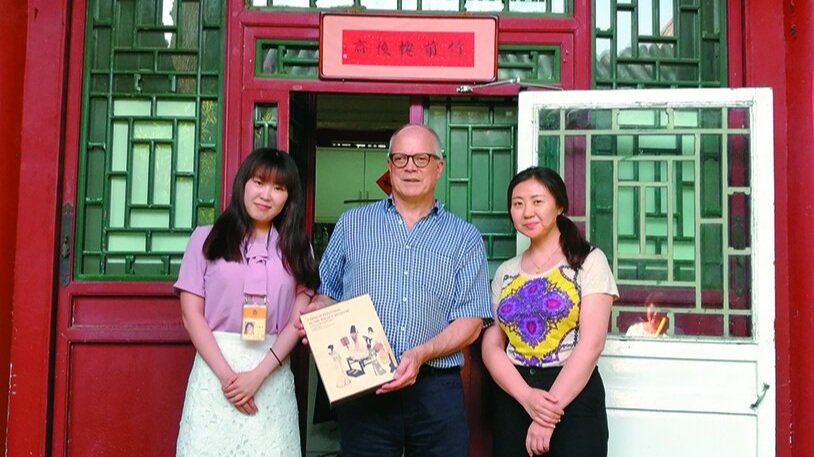
Autumn Viewing in the Forbidden City: An Interview with Dickson Hall
In late 2016, The Forbidden City Publishing House released a colour edition of a catalogue of the early paintings in the Palace Museum, Beijing that had originally been published in the late 1980s. The catalogue, Chinese Paintings in the Palace Museum (4th–14th Century), is unique in that it was written in English by a Western scholar with unprecedented access to the paintings, and in that it was intended as a guide for Westerners visiting the regular autumn display of the works. The author, Dickson Hall, was one of the first Westerners to study at Beijing’s Central Academy of Fine Arts (CAFA) after the Cultural Revolution (1966–76).
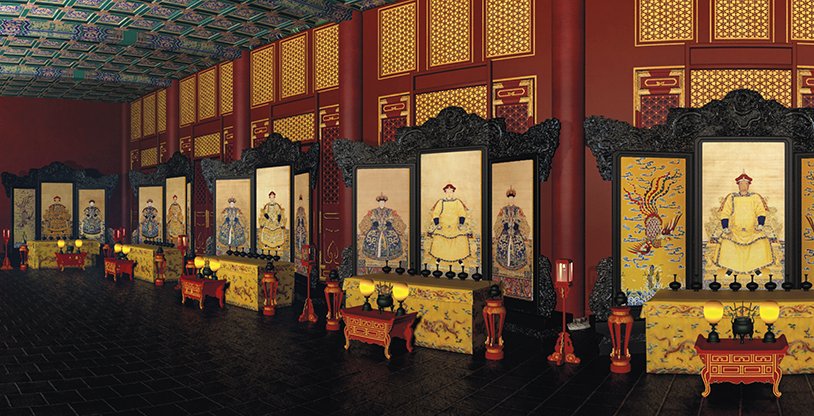
Encountering the Majestic: Imperial Portraits and Qing Court Rites
For the July 2022 opening of the Hong Kong Palace Museum (HKPM), an unprecedented number of over 900 precious treasures were loaned from the Palace Museum for display in the opening exhibitions. While some of these treasures have never been exhibited before, many have been widely presented in past exhibitions. It therefore became both a challenge and an opportunity for curators to find new and innovative ways to represent and reinterpret them. Take, for example, the por-traits of emperors and empresses.
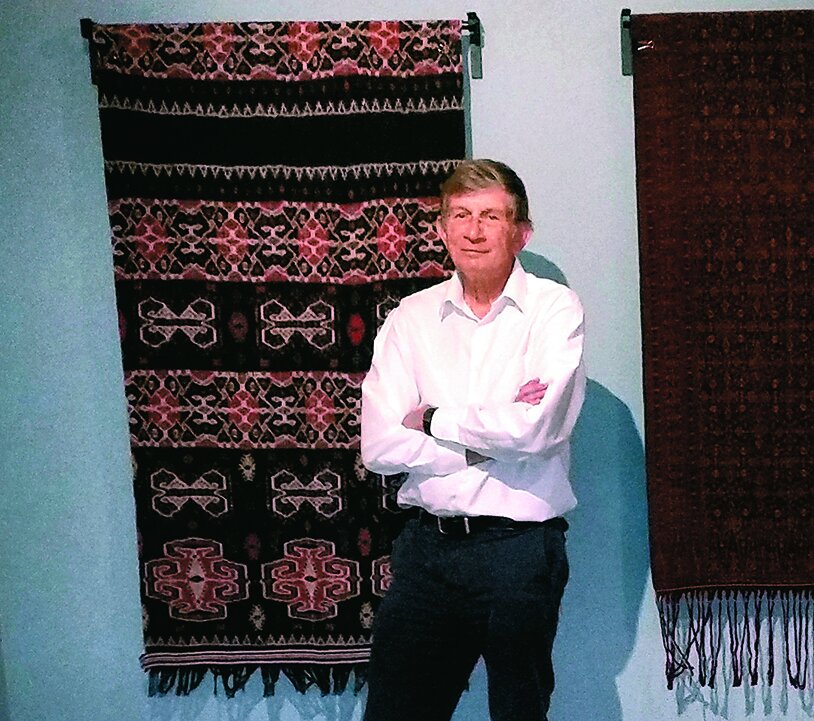
Woven Languages: An Interview with Peter ten Hoopen
Growing up in the Netherlands in the 1950s, I came into contact with Indonesian culture at an early age. Neighbours who had lived in ‘Indië’ loved to display whatever works of art they had brought home from this enchanted world, with its hints of mystery and magic. In 1975 a friend showed me an ikat from Sumba. With its intriguing, scintillating patterns, it immediately fascinated me.

Stitches Empowered: Korean Embroidery Arts from the Joseon Dynasty
Toward the latter half of the Joseon dynasty (1392−1910), when the conservative interpretation of neo-Confucian teachings became mainstream, women, regardless of their social and economic status, increasingly faced rigid restrictions in all aspects of daily life. From 8 March to 26 July 2020, The Cleveland Museum of Art (CMA) and the Seoul Museum of Craft Art will pre-sent an exhibition titled ‘Golden Needles: Embroidery Arts from Korea’ in CMA’s Arlene M. and Arthur S. Holden Textile Gal-lery and Korea Foundation Gallery. This special exhibition explores Korean fine embroidered works as tools of empowerment for women to overcome social constraints and to define their own cultural identity.

Fringe Benefit: The Margins of Islamic Art at Shangri La
The Islamic art collection housed at Shangri La in Honolulu, Hawai‘i is unique for a publicly accessible collection. Numbering more than 2,500 objects, it includes important works of art and represents a sustained commitment to collecting for nearly 60 years. However, no professionally trained curator or renowned art historian ever oversaw or even advised on the purchase of its pieces.

Bridging the Distance: Forging Connections with Islamic Art at the Walters Art Museum, Baltimore
In the new installation ‘Across Asia: Arts of Asia and the Islamic World’ at the Walters Art Museum in Baltimore, multimodal interpretation—from digital and analogue interactive elements to polyvocal didactics—serves to forge connections between the historical art on view and the 21st century museum visitor.

An Interview with Amna Naqvi
Amna Naqvi’s lifelong love of art, literature and learning has come together in the AAN Foundation, an effort to provide sup-port and platforms for cultural projects related to Asia. Born in Pakistan, Amna and her family now call Hong Kong home, having also lived previously in Indonesia and Singapore. Although contemporary art is a major passion—the AAN Collection is the largest such private assemblage of Pakistani contemporary art—history figures prominently in her interests and in her development as a collector and arts patron. Alexandra Seno talks with Amna about her connection with art.

Hariti Domesticated: Re-evaluating Structures of Patronage in Gandharan Art
Strategically located on pan-Asian trade networks in modern-day northwestern Pakistan and Afghanistan, the region named Gandhara was of tremendous economic importance in the early centuries of the Common Era, a locus of exchange between cultures, both in terms of trade and ideas. Over the centuries, it was successively occupied by Achaemenid, Mauryan, Greco-Bactrian, Scythian, Parthian and finally, Kushan rulers, with each of these foreign dynasties leaving imprints of their visual culture and belief systems.

An Interview with Trickie Lopa
In 2006 Trickie Lopa founded the affordable art fair Art In The Park, together with Lisa Ongpin-Periquet, to raise funds for the Museum Foundation of the Philippines, of which she was then a board member. In 2012, the duo set up Philippine Art Events Inc., and together with Dindin Araneta, they now manage Art In The Park, Art Fair Philippines (founded in 2013) and The Nonesuch fair (established in 2017). Orientations talked to Trickie about her taste in art, how she developed her collection and how she displays it in her Manila home.

Philippine Gold: Southeast Asian Trade and Transmission
The Wenxian tongkao (Comprehensive Examination of Literature by Ma Duanlin [1245–1322]) mentions a Philippine ship arriving in China in 982 and subsequent dynastic records list gold as an item of exchange. But the Chinese records contain no details about the nature of the gold that was traded, and it is not until the 16th century arrival of the Spanish that we are provided with a wealth of information about gold working and the ornaments themselves.

An Interview with Kjeld von Folsach, Director of the David Collection
The David Collection in Copenhagen, Denmark, was founded in 1945 by the prominent lawyer Christian Ludvig David (1878–1960). The collection, consisting of three main categories—Islamic art, 18th century European art and Danish early modern art—is housed in the building that was once his residence and a neighbouring property acquired in 1986. It is entirely funded by private means through the C. L. David Foundation and Collection, which also supports other institutions, excavations and publications. In his role as director since 1985, Kjeld von Folsach has overseen the strengthening of the collection and the total renovation and reinstallation of the museum. We speak to him about the evolution of the collection and future plans for the museum.
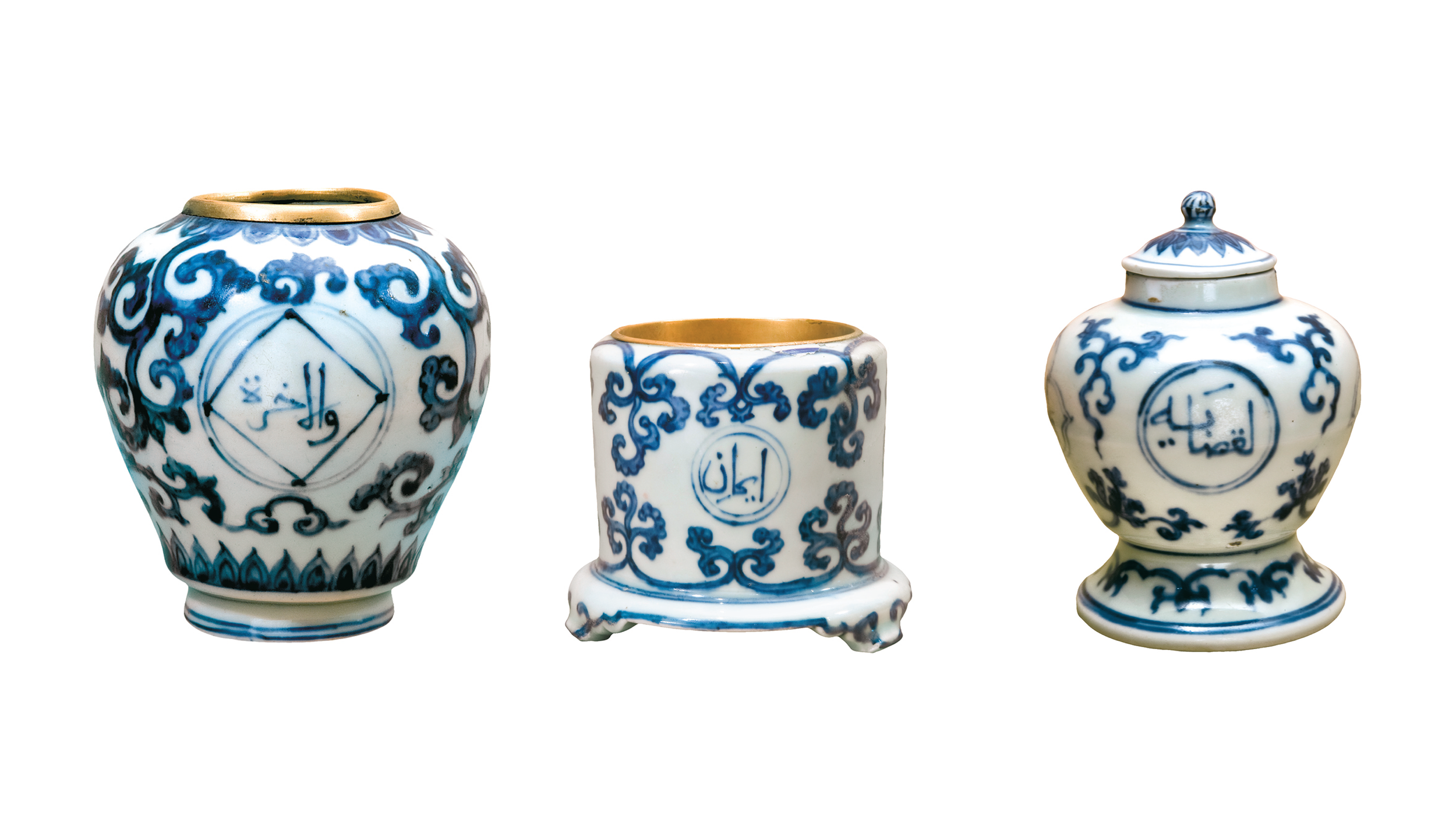
Muslim Blue, Chinese White: Islamic Calligraphy on Ming Blue-and-white Porcelain
Nearing the end of the second decade of the 21st century, the world is witnessing a global pivot toward Asia in international affairs. Meanwhile, China’s ambitious Belt and Road Initiative is predicated upon the global importance of mutually beneficial relations between China and its westward neighbours, a vast proportion of whom are Muslims. The success of the initiative, with its economic and political aspirations, depends on bringing together people of diverse cultures, evoking the history of ancient commercial overland and maritime trade networks, romantically imagined as the ‘Silk Roads’.

The Making of ‘Eternal Offerings’: A Collaboration
The Minneapolis Institute of Art (Mia) possesses one of the great collections of archaic Chinese bronzes in the United States. While additions have been made in recent years, the core of the collection was bequeathed to the museum in 1950 by Alfred Fiske Pillsbury (1869–1950) (Fig. 1). Ranging in date from the Shang (c. 1600–1046 ) through the Han (206 –220 ) dynasties, the collection was the result of a relationship between Pillsbury and international art dealer C. T. Loo (1880–1957), who, in the 1930s and 40s, located excellent examples of nearly every vessel type
